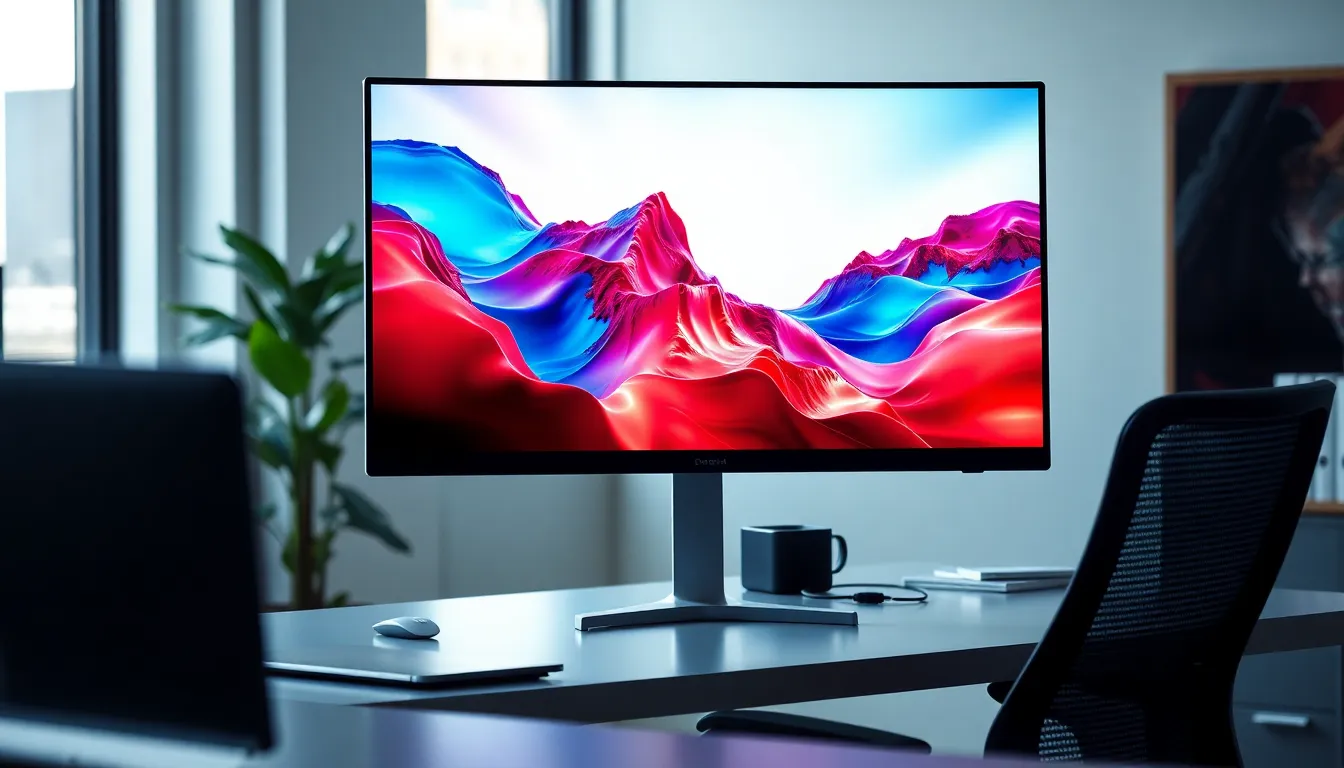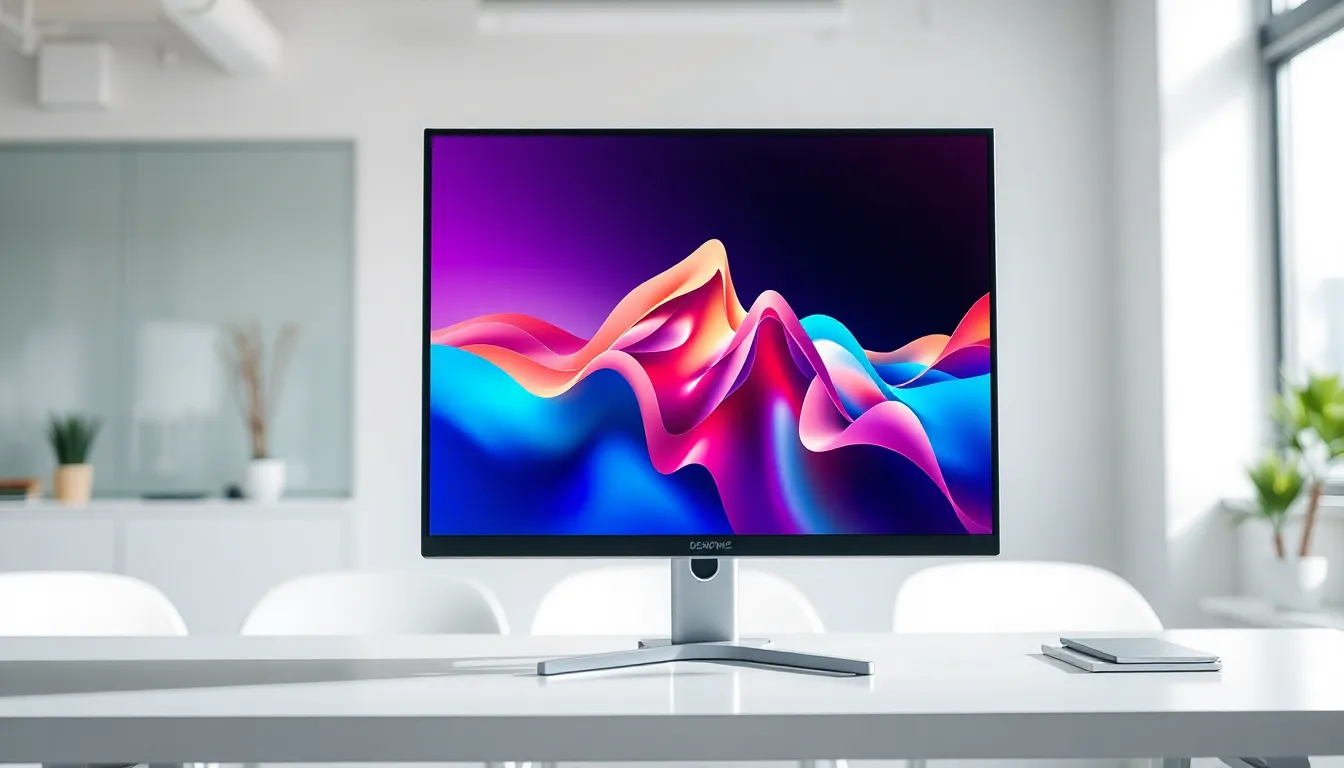In today’s fast-paced world, staying productive can feel like trying to catch a greased pig. With distractions lurking around every corner, having the right tools is essential. Enter the productivity monitor—the unsung hero of the workspace that can turn chaos into clarity. Imagine a screen so vibrant and spacious that it practically begs you to unleash your creativity and tackle that to-do list like a boss.
Best Productivity Monitor
Productivity monitors play a critical role in enhancing focus and efficiency. They provide individuals with the visual space needed to organize tasks effectively. A clear, spacious display minimizes distractions and promotes a conducive work environment. Engaging visuals can stimulate creativity and improve workflow.
In a world filled with distractions, the right monitor can significantly impact performance. A productivity monitor helps streamline multiple tasks, allowing users to view information side by side. Improved multitasking capabilities boost time management and increase output.
Users experience reduced eye strain thanks to features like blue light filters and high-resolution displays. Enhanced comfort leads to longer periods of concentrated work, which benefits overall productivity. Tools like screen splitting and various resolution settings enable tailored workspaces that cater to specific tasks.
Choosing a monitor with adjustable height and angle promotes ergonomic benefits. Ergonomics contribute to physical well-being, minimizing discomfort during extended use. Adaptable workstations not only encourage better posture but also maintain energy levels throughout the day.
Ultimately, investing in a productivity monitor yields significant returns in both personal and professional domains. Greater productivity not only enhances job satisfaction but also contributes to overall success. Prioritizing a suitable monitor can transform how individuals approach their work, streamlining processes and enabling high-quality outputs.
Features To Consider When Choosing


Selecting the right productivity monitor involves evaluating several key features. Each plays a significant role in enhancing efficiency and user experience.
Screen Size
Screen size impacts visibility and workspace management. A larger screen, typically 27 inches or more, facilitates multitasking. Multiple applications appear simultaneously, reducing the need to switch windows. Smaller monitors, like 24 inches, can work well in limited spaces but may restrict workflow. Consider available desk space and personal comfort when choosing monitor size. Extended use often benefits from wider displays that minimize eye movement, ultimately promoting sustained focus.
Resolution
Resolution defines image clarity and detail. Higher resolution monitors, such as 4K, provide sharper images for tasks involving design or data analysis. Clear visuals reduce eye strain, enabling longer work periods without discomfort. For general use, a Full HD resolution is adequate. However, for professional environments, opting for at least 1440p resolution enhances productivity significantly. Assessing resolution helps ensure that text and graphics remain clear and vibrant.
Panel Type
Panel type affects color accuracy and viewing angles. IPS panels offer superior color reproduction and wider viewing angles, making them ideal for creative work. VA panels deliver deeper blacks and better contrast, suitable for multimedia tasks. TN panels, while faster for gaming, often lack color depth and angle visibility. Prioritize panel types based on specific tasks and preferences to maximize visual comfort and performance. Understanding panel differences allows for informed decisions that align with individual work requirements.
Top Picks For The Best Productivity Monitor
These monitors stand out for enhancing productivity by combining essential features and outstanding performance.
Monitor 1: Key Features and Benefits
The Dell UltraSharp U2720Q excels with its 27-inch 4K display. Color accuracy reached 99% sRGB, making it ideal for designers. Users appreciate the USB-C connectivity, allowing seamless integration with laptops. Ergonomic designs provide adjustable height and tilt, promoting comfort during long sessions. This monitor enhances multitasking, supporting split-screen operations without distraction.
Monitor 2: Key Features and Benefits
The LG 34WN80C-B provides a curved ultra-wide screen at 34 inches, significantly improving peripheral vision. Its IPS panel offers 98% sRGB color coverage, appealing to creative professionals. Multiple ports including HDMI and DisplayPort facilitate connectivity with various devices. Users value the Picture-by-Picture feature for effective multitasking. Adjustable height ensures users maintain an ergonomic posture.
Monitor 3: Key Features and Benefits
The ASUS ProArt PA32UCX boasts a 32-inch 4K HDR display, delivering exceptional image clarity. With a peak brightness of 1,200 nits, detailed visuals enhance data analysis or creative projects. True 10-bit color depth ensures precise color grading, essential for professionals. The monitor’s variety of color modes caters to specific tasks efficiently. Adjustable features maintain comfort and reduce strain during extended use.
Tips For Maximizing Productivity With Your Monitor
Maximizing productivity begins with proper monitor setup. Ensure the display is at eye level to promote good posture and reduce strain. Adjust brightness and contrast settings for optimal clarity, enhancing viewing comfort during long hours.
Creating a clutter-free workspace boosts concentration. Utilize virtual desktops to organize applications, which allows for quick access and smooth transitions between tasks. Organize cables and other peripherals to foster an orderly environment.
Using multiple monitors can amplify productivity. Extending the display across screens accommodates various applications side by side, making multitasking seamless. Implement window management tools to arrange open applications effortlessly, enhancing efficiency.
Utilize screen split features to improve organization. Many productivity monitors come equipped with built-in software that allows users to divide the screen into sections, making it easier to manage multiple documents. Prioritize critical tasks on larger sections to maintain focus.
Experiment with color settings to reduce eye fatigue. Warmer tones are gentler on the eyes, especially during evening work sessions. Toggle between different presets based on time of day for enhanced comfort.
Incorporating regular breaks into the workflow is essential. Adopting the 20-20-20 rule is effective; every 20 minutes, look at something 20 feet away for at least 20 seconds to reduce eye strain. This practice maintains overall productivity by keeping energy levels balanced.
Lastly, leveraging productivity apps can streamline processes. Many applications can help with task management and time tracking, providing alerts and reminders. By integrating these tools with a productivity monitor, individuals can boost focus and concentration significantly.

